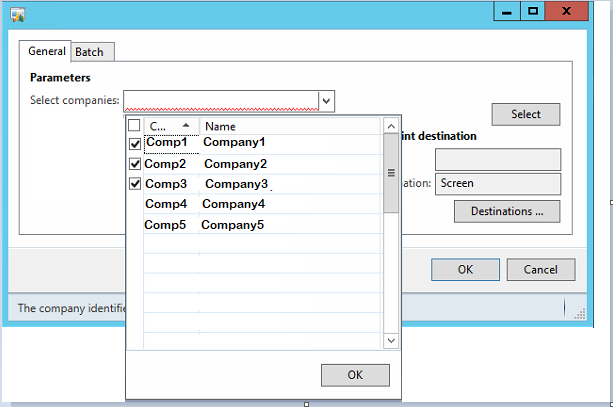Read/Upload file (csv/excel) - Azure Storage D365
Read/Upload file (csv/excel) from
Azure blob container - D365
Read CSV file from Azure blob container.
1) Create a method that downloads the file in to memory stream.
We can create connection with Azure using different approaches(Go to link below)
public System.IO.Stream downloadFileFromAzureBlobContainer(System.IO.MemoryStream fileStream, str _fileName)
{
try
{
fileStream = new System.IO.MemoryStream();
blobClient = storageAccount.CreateCloudBlobClient();
blobContainer = blobClient.GetContainerReference("YourcontainerName");
blobContainer.CreateIfNotExistsAsync();
CloudBlockBlob blockblob = blobContainer.GetBlockBlobReference(_fileName);
if (blockblob && blockblob.Exists(null, null))
{
blockblob.DownloadToStream(fileStream, null, null, null);
if (fileStream.Length > 0)
{
return fileStream;
}
}
return null;
}
catch (Exception::CLRError)
{
CLRObject exception = CLRInterop::getLastException();
CLRObject innerException = exception.get_InnerException();
return null;
}
}
2) Read the downloaded stream of file
public void readCSVFileFromAzure()
{
System.IO.MemoryStream streamFile, streamFileAzure;
CommaStreamIo streamIO;
streamFileAzure = this.downloadFileFromAzureBlobContainer(streamFile, "YourFileName");
isHeaderRow = true;
if (streamFileAzure != null && streamFileAzure.Length > 0)
{
streamIO = commaStreamIo::constructForRead(streamFileAzure);
streamIO.inFieldDelimiter(',');
if(streamIO)
{
while(streamIO.status() == IO_Status::Ok)
{
conFile = streamIO.read();
if (conLen(conFile) > 0 && !isHeaderRow)
{
this.insertRecord(conFile);
}
isHeaderRow = false;
}
}
}
}
Upload CSV file to Azure blob container.
1) Create a method that uploads the file memory stream to Azure.
We can create connection with Azure using different approaches(Go to link below)
public boolean uploadFileToAzureBlobContainer(System.IO.Stream _fileContentInStream, str _fileName)
{
try
{
blobContainer.CreateIfNotExistsAsync();
CloudBlockBlob blockblob = blobContainer.GetBlockBlobReference(_fileName);
if (blockblob && !blockblob.Exists(null, null))
{
_fileContentInStream.Position = 0;
blockblob.UploadFromStreamAsync(_fileContentInStream, _fileContentInStream.Length);
return true;
}
return false;
}
catch
{
return false;
}
}
2) Create memory stream of CSV file to upload.
public void readCSVFileFromAzure()
{
CommaStreamIo streamIO;
System.IO.MemoryStream streamFileAzure;
boolean isFileUploaded, isLineAdded;
streamIO = commaStreamIo::constructForWrite();
container header = ["Name", "Id", "Gender"];
streamIO.writeExp(header);
container line = ["Saeed", "1", "Male"];
streamIO.writeExp(line);
isLineAdded = true;
if (isLineAdded)
{
streamFileAzure = streamIO.getStream();
isFileUploaded = this.uploadFileToAzureBlobContainer(streamFileAzure, "FileName.csv");
if (isFileUploaded)
{
info("file uploaded");
}
}
}
Read Excel file from Azure blob container.
1) Create a method that downloads the file memory stream from Azure.
We can create connection with Azure using different approaches(Go to link below)
public System.IO.Stream downloadFileFromAzureBlobContainer(System.IO.MemoryStream fileStream, str _fileName)
{
try
{
fileStream = new System.IO.MemoryStream();
blobClient = storageAccount.CreateCloudBlobClient();
blobContainer = blobClient.GetContainerReference("YourcontainerName");
blobContainer.CreateIfNotExistsAsync();
CloudBlockBlob blockblob= blobContainer.GetBlockBlobReference(_fileName);
if (blockblob && blockblob.Exists(null, null))
{
blockblob.DownloadToStream(fileStream, null, null, null);
if (fileStream.Length > 0)
{
return fileStream;
}
}
return null;
}
catch (Exception::CLRError)
{
CLRObject exception = CLRInterop::getLastException();
CLRObject innerException = exception.get_InnerException();
return null;
}
}
2) Read memory stream of Excel file.
public void importExcelFile(System.IO.Stream _streamFile)
{
OfficeOpenXml.ExcelWorksheet worksheet;
OfficeOpenXml.ExcelRange cells;
System.IO.Stream stream, streamFile;
int totalRows, totalCells, rows, cellCount;
streamFile = this.downloadFileFromAzureBlobContainer(stream, "fileName");
OfficeOpenXml.ExcelPackage package = new OfficeOpenXml.ExcelPackage(streamfile);
if(package)
{
worksheet = package.get_Workbook().get_Worksheets().get_Item(1);
cells = worksheet.Cells;
totalRows = worksheet.Dimension.End.Row;
totalCells = worksheet.Dimension.End.Column;
for (rows= 2; rows<= totalRows; rows++)
{
for (cellCount=1; cellCount<=totalCells; cellCount++)
{
//your logic goes here
//cells.get_Item(rows, cellCounter).value;
}
}
}
}



Comments
Post a Comment